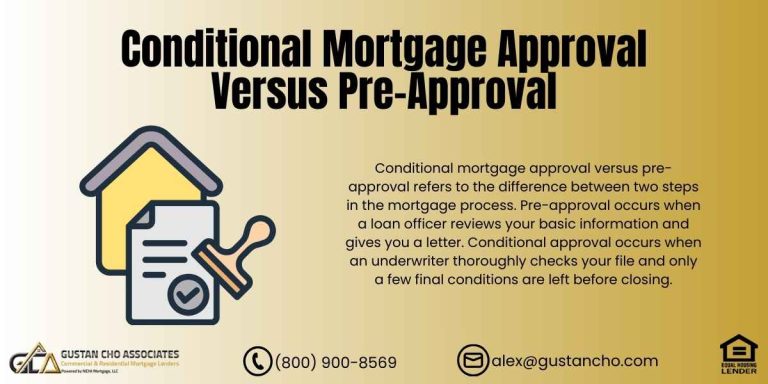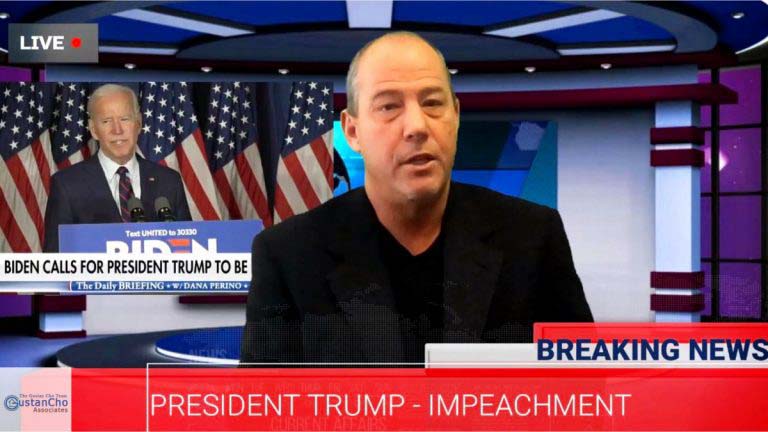How Do Principal Payments Work On Home Mortgages
Understanding how principal payments work on home mortgages is one of the most important things every homeowner should learn. Whether you’re a first-time homebuyer or an experienced homeowner, knowing how your mortgage payments are divided between principal and interest can help you build equity faster and save thousands of dollars in interest over time.
At Gustan Cho Associates, we believe knowledge is power when it comes to homeownership. Let’s take a closer look at how principal payments work, ways to pay off your home faster, and why even tiny extra payments can really add up over time.
What Are Principal Payments on a Mortgage?
When you pay your monthly mortgage, it usually includes P.I.T.I. — that means you’re covering the principal, interest, taxes, and insurance.
The principal is the amount of money you originally borrowed to buy your home, minus your down payment. When you make a payment, part of it goes to paying down your loan balance, while the other part covers the interest, which is the fee for borrowing the cash.
For example:
If you buy a home for $300,000 with a 10% down payment ($30,000), your starting principal loan balance will be $270,000. That’s the amount you owe your lender and what your mortgage payments are based on.
Cut Years Off Your Mortgage with Extra Principal
Every extra rupee toward principal lowers next month’s interest and total lifetime interest.
How Do Principal Payments Work on Home Mortgages?
How do principal payments work on home mortgages? In simple terms, every time you make a payment, part of it goes to pay interest (the lender’s profit), and part goes to pay principal (reducing your balance).
When you first get your loan, a big chunk of your payment is eaten up by interest, and a little goes toward paying down the actual amount you borrowed, or principal. As you make more payments and your loan balance decreases, less of your payment goes toward interest, and more goes toward principal. This process is called amortization.
Understanding Mortgage Amortization
Mortgage amortization is how your loan is structured to be paid off over time. Each month, the lender recalculates interest based on your remaining loan balance. The smaller your balance becomes, the less interest you pay — and the faster your principal decreases.
Here’s a simplified amortization example for a $270,000 loan at 6% for 30 years:
| Year | Monthly Payment | Principal Paid | Interest Paid | Remaining Balance |
| 1 | $1,620 | $340 | $1,280 | $266,000 |
| 5 | $1,620 | $450 | $1,170 | $247,000 |
| 10 | $1,620 | $610 | $1,010 | $212,000 |
| 20 | $1,620 | $970 | $650 | $127,000 |
| 30 | $1,620 | $1,610 | $10 | $0 |
Notice how, in the early years, most of your payment goes toward interest. But as time goes on, the principal portion grows, helping you build equity — your ownership stake in the property.
What Is the Interest Component of a Mortgage Payment?
The interest is the cost you pay your lender to borrow money. It’s calculated as a percentage of your remaining principal balance. If you’ve got a loan balance of $200,000 with a 5% interest rate, you’ll end up paying about $10,000 in interest each year, which breaks down to roughly $833 a month early on in your loan.
As your balance decreases, the interest cost goes down because you’re charged on a smaller amount. However, it’s important to remember that interest doesn’t build equity — it’s simply the lender’s fee for providing the loan.
What Makes Up Your Monthly Mortgage Payment?
Many homeowners handle their mortgage through an escrow account. This is where the lender gathers money for homeowner’s insurance, property taxes, and your principal and interest payments.
Here’s what a typical P.I.T.I. payment includes:
Principal
Principal payments are the portion of your monthly mortgage payment that directly reduces the outstanding balance of your loan. Understanding how do principal payments work on home mortgages is essential as paying more towards the principal can lead to a decrease in the overall interest paid over the life of the loan.
Interest
Interest is the fee the lender charges for borrowing the money, calculated as a percentage of the loan amount. Knowing how principal payments work on home mortgages can help borrowers strategize their payments, as higher principal payments can reduce the interest amount due over time.
Taxes
Property taxes are an annual fee levied by local governments based on the assessed value of your home. Dividing this annual figure into monthly portions allows homeowners to manage cash flow more effectively while understanding how principal payments work on home mortgages, ensuring they can allocate their budgets appropriately.
Insurance
Homeowner’s insurance protects against potential damage to your property. In contrast, mortgage insurance may be required for loans with lower down payments. Being aware of how do principal payments work on home mortgages can also help homeowners understand the total cost of homeownership, including the need for adequate insurance coverage.
With a fixed-rate mortgage, your principal and interest payments won’t change, but your property taxes and insurance could go up or down every year, which might tweak your overall monthly payment a bit.
First Payment After Closing: What Really Happens
Interest is charged on the reduced balance after your principal hits—timing matters.
How Making Extra Principal Payments Saves Money
One of the smartest financial moves homeowners can make is paying extra toward principal. Even small additional payments can help you pay off your mortgage years earlier and save tens of thousands of dollars in interest.
For example:
Making one extra mortgage payment each year can help you pay off a 30-year loan about 7 years sooner. Plus, if you switch from monthly payments to bi-weekly ones, you’re actually making 26 half-payments each year (which adds up to 13 full payments). That can also cut your loan term by about 6 to 7 years.
Always remember to note “apply to principal” when submitting an extra payment, and follow up with your lender to confirm it was applied correctly.
How Extra Payments Impact Equity and Loan Term
When you make extra payments toward your principal, you’re directly reducing the amount you owe — which means:
- You build equity faster
- You pay less interest overall
- You can reach full ownership sooner
Let’s consider two borrowers with a $270,000 loan at an interest rate of 6%. Borrower A makes regular payments and will pay off the loan in 30 years. This approach follows the standard loan repayment schedule without any additional contributions to the principal. On the other hand, Borrower B takes a more aggressive approach by adding $200 each month toward the principal. As a result, Borrower B is able to pay off the loan in just 25 years, which not only shortens the loan term but also leads to nearly $60,000 in savings on interest payments over the life of the loan.
These savings grow even larger if you refinance or make lump-sum payments along the way.
How to Check Your Principal Payments
You can easily check how much of your payment goes to principal and interest by reviewing your monthly mortgage statement or logging into your lender’s online portal. You’ll see a clear breakdown showing:
- Current principal balance
- Principal paid this month
- Interest paid this month
- Year-to-date totals
Some mortgage servicers also offer amortization calculators that let you project your loan balance and see how extra payments impact your payoff date.
Tips to Pay Down Your Mortgage Faster
If your goal is to pay off your mortgage sooner, here are a few proven strategies:
- Make biweekly payments instead of monthly ones.
- Round up your payment — even an extra $50 or $100 a month helps.
- Apply tax refunds or bonuses directly toward principal.
- If you can afford the higher monthly payments, consider refinancing to a 15-year loan.
- Avoid skipping payments or extending your term, which resets your interest schedule.
Why Understanding Principal Payments Matters
Your home is likely your biggest investment. Knowing how do principal payments work on home mortgages helps you make smarter financial decisions, plan for early payoff, and grow your net worth through home equity.
When you understand how your payments are applied, you can take control of your loan instead of letting it control you.
Final Thoughts: Take Control of Your Mortgage
Understanding how do principal payments work on home mortgages gives you the power to save money, build wealth, and reach financial freedom faster. Every dollar you put toward your principal reduces your loan balance and cuts down on the interest you’ll pay over the life of your mortgage.
At Gustan Cho Associates, we help borrowers explore strategies to pay off their homes sooner, refinance wisely, and choose the right loan program for their goals.
Borrowers who need a five-star national mortgage company licensed in 50 states with no overlays and who are experts on how principal payments work, please contact us at 800-900-8569, text us for a faster response, or email us at alex@gustancho.com.
Frequently Asked Questions About How Do Principal Payments Work on Home Mortgages:
Q: What Does “Principal” Mean in a Mortgage Payment?
A: The principal is the amount of money you borrowed to buy your home. When you make your monthly payment, part of it goes toward paying down that loan balance. Understanding how do principal payments work on home mortgages helps you see how your loan balance drops each month.
Q: How Much of My Mortgage Payment Goes to Principal and Interest?
A: Most of your payment initially goes to interest, and only a small part goes to principal. Over time, the portion going to principal increases. This is how principal payments work on home mortgages — more of your money starts reducing your loan balance as you get deeper into the term.
Q: Can I Pay Extra Toward My Principal?
A: Yes! You can pay extra toward your principal anytime. Making additional principal payments helps you pay off your mortgage faster and save on interest. Just be sure to tell your lender to apply it to principal only.
Q: How do Principal Payments Build Equity in My Home?
A: Each time you pay principal, you’re increasing your ownership in your home. The more you pay down your loan, the more equity you have. That’s why knowing how do principal payments work on home mortgages is so important for building long-term wealth.
Q: What Happens if I Make One Extra Payment a Year?
A: Making just one extra full mortgage payment per year can cut about seven years off a 30-year mortgage. It’s a simple way to take advantage of how principal payments work on home mortgages and save thousands in interest.
Q: Do Principal and Interest Stay the Same Every Month?
A: The total monthly payment stays the same on a fixed-rate mortgage, but the split between principal and interest changes. Over time, more goes toward principal and less toward interest — that’s how principal payments work on home mortgages under amortization.
Q: What is an Amortization Schedule?
A: An amortization schedule breaks down your loan payments into how much goes toward paying off the principal and how much is interest over time. It’s a handy way to see how your loan balance decreases and how your principal payments on a home mortgage play out month after month.
Q: How Can I See How Much Principal I’ve Paid so Far?
A: You can check your mortgage statement or your lender’s online portal. It will show how much principal and interest you’ve paid. This helps you track your progress and understand how principal payments work on home mortgages in real life.
Q: Will Extra Principal Payments Lower My Monthly Payment?
A: No, your regular monthly payment usually stays the same. But making extra principal payments lowers your loan balance faster, meaning you’ll pay off your mortgage sooner and reduce your total interest costs.
Q: Why is it Important to Understand How Principal Payments Work on Home Mortgages?
A: Knowing how do principal payments work on home mortgages helps you make smarter financial decisions. You’ll understand where your money goes, how to save on interest, and how to own your home free and clear sooner.
This article about “How Do Principal Payments Work On Home Mortgages” was updated on October 14th, 2025.
Plan Your Payoff with an Amortization Walkthrough
We’ll map your schedule, show interest front-loading, and model savings from extra principal.










